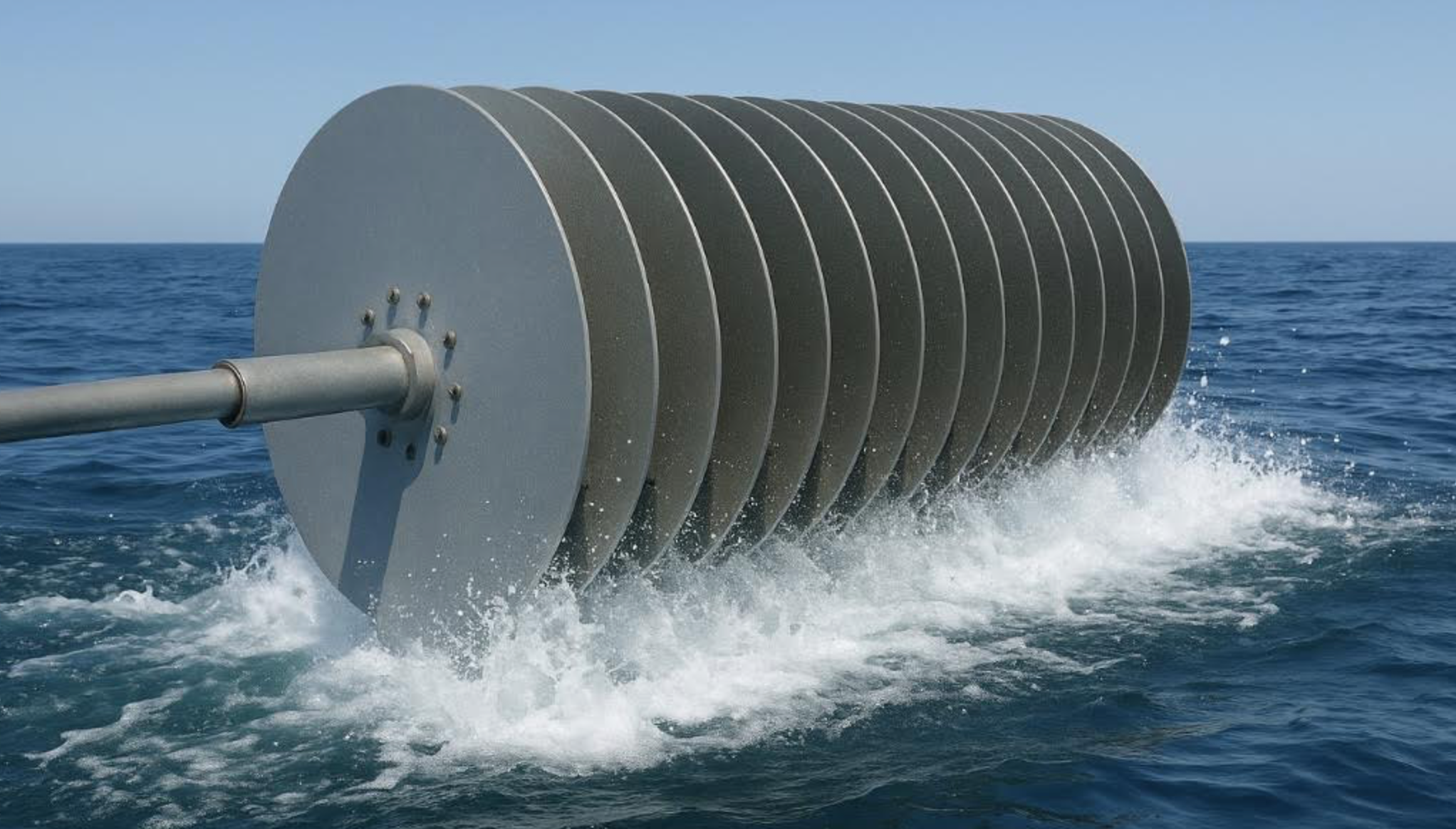
Why Rotating Disc Arrays Produce Massive Thrust Compared to Traditional Paddle Wheels
A 240-disc rotating array powered by a 10 HP motor produces hundreds of thousands of pounds of thrust—far exceeding that of traditional paddle wheels. Why is it so much more powerful? Here's the fluid dynamics explanation.In the search for highly efficient propulsion systems for watercraft, particularly multi-hull vessels, the comparison between traditional paddle wheels and rotating disc arrays reveals dramatic performance differences. A theoretical analysis of a 240-disc array shows that it can produce over 670,000 pounds of thrust, vastly outperforming a flat blade paddle system using the same motor power. What causes such a leap in theoretical performance? The answer lies in surface area, velocity scaling, and hydrodynamic principles.1. Surface Area Is EverythingThrust is primarily generated by displacing water, and the more surface area that contacts the water, the greater the displacement force. A typical paddle wheel might have 9 flat blades, each with around 3 square feet of submerged area. In contrast, a disc array composed of 240 large discs (6 feet in diameter, spaced 0.2 inches apart across 4 feet of width) yields a total frontal area of over 6,700 square feet.This is more than 250 times the surface area of the paddle wheel, and it directly contributes to a proportional increase in force generation.2. Thrust Grows Exponentially with VelocityThe drag force equation illustrates a key point:$$F = \frac{1}{2} \cdot \rho \cdot C_d \cdot A \cdot v^2$$Thrust increases not linearly, but with the square of the velocity at the rim of the disc. Even at 30 RPM, the 6-foot diameter discs have an edge speed of over 9.4 ft/sec. As velocity doubles, thrust quadruples. In the disc system, both high velocity and high surface area combine to multiply thrust output dramatically.3. Continuous Water Contact Increases Net ForceA paddle wheel blade only generates thrust for a limited portion of its rotation. The rest of the cycle includes blade entry and exit phases, which contribute little or no thrust—and often create energy-wasting splashes. In contrast, a disc array maintains continuous water contact across the full 360 degrees of rotation.This consistency allows the disc system to convert nearly all rotational motion into forward thrust, further increasing net performance.4. Optimized Water Entry Reduces LossesFlat paddle blades often strike water at inefficient angles, causing turbulence, splashing, and drag losses. Rotating discs, by contrast, enter and move through the water uniformly, reducing waste and increasing the proportion of mechanical energy that is converted into forward movement.5. Hydrodynamic Enclosure EffectsWhen discs are spaced closely, they begin to act not as individual elements, but as a unified hydrodynamic wall. Water between the discs becomes constrained, increasing pressure differentials and improving net displacement efficiency. This structural configuration resists flow-through losses and intensifies the propulsion effect.Summary: Why Thrust Is So Much Higher| Factor | Traditional Paddle Wheel | Rotating Disc Array || ------------------------| -----------------------| ------------------|| Frontal Surface Area | Moderate | Extremely High || Thrust Generation Pattern | Cyclical (intermittent) | Continuous || Water Entry Losses | High | Low || Drag Coefficient | High | Moderate || Edge Speed | Similar | Similar || Thrust Efficiency | Moderate | Very High |ConclusionThe extraordinary thrust generated by a rotating disc array is not a mystery—it's physics. With high surface area, consistent engagement, and velocity-squared force scaling, this design leverages fluid dynamics far more efficiently than traditional paddle wheels. While real-world considerations like turbulence, torque limits, and material constraints would reduce this ideal performance, the concept clearly reveals how geometry and mechanics can dramatically change thrust potential in watercraft design.
